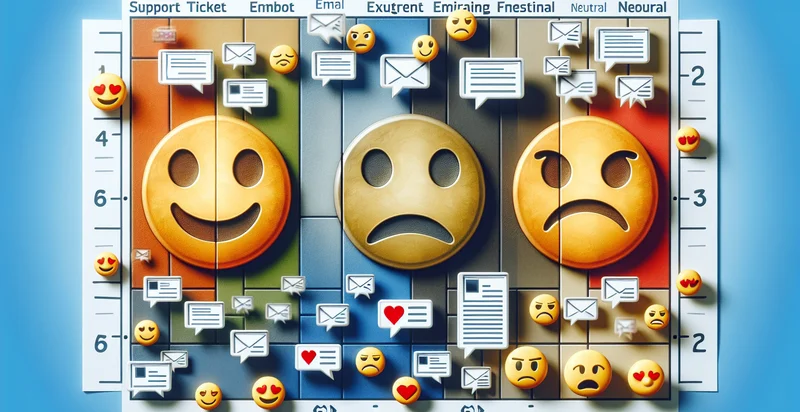Identify complaint category
using AI
Below is a free classifier to identify complaint category. Just input your text, and our AI will predict the category of the complaint. - in just seconds.

Contact us for API access
Or, use Nyckel to build highly-accurate custom classifiers in just minutes. No PhD required.
Get started
import nyckel
credentials = nyckel.Credentials("YOUR_CLIENT_ID", "YOUR_CLIENT_SECRET")
nyckel.invoke("complaint-category", "your_text_here", credentials)
fetch('https://www.nyckel.com/v1/functions/complaint-category/invoke', {
method: 'POST',
headers: {
'Authorization': 'Bearer ' + 'YOUR_BEARER_TOKEN',
'Content-Type': 'application/json',
},
body: JSON.stringify(
{"data": "your_text_here"}
)
})
.then(response => response.json())
.then(data => console.log(data));
curl -X POST \
-H "Content-Type: application/json" \
-H "Authorization: Bearer YOUR_BEARER_TOKEN" \
-d '{"data": "your_text_here"}' \
https://www.nyckel.com/v1/functions/complaint-category/invoke
How this classifier works
To start, input the text that you'd like analyzed. Our AI tool will then predict the category of the complaint..
This pretrained text model uses a Nyckel-created dataset and has 18 labels, including Advertising Accuracy, After-Sales Support, Availability Of Product, Billing Issue, Customer Service, Employee Interaction, Order Accuracy, Payment Processing, Pricing Concern and Product Description.
We'll also show a confidence score (the higher the number, the more confident the AI model is around the category of the complaint.).
Whether you're just curious or building complaint category detection into your application, we hope our classifier proves helpful.
Related Classifiers
Need to identify complaint category at scale?
Get API or Zapier access to this classifier for free. It's perfect for:
- Customer Support Prioritization: This use case involves categorizing customer complaints based on severity and type, allowing support teams to prioritize responses effectively. By identifying the category of complaints, companies can allocate resources to handle the most urgent issues first, improving overall customer satisfaction.
- Product Improvement Insights: By analyzing complaint categories over time, businesses can identify recurring issues related to specific products or services. This insight allows organizations to focus on areas needing improvement and enhance product quality based on customer feedback.
- Trend Analysis for Marketing: Categorizing complaints can help marketing teams understand customer sentiment and identify shifting trends over time. This data can inform marketing strategies and help tailor campaigns to address customer concerns, ultimately enhancing brand perception.
- Compliance and Risk Management: Businesses can use complaint categorization to ensure compliance with regulatory standards by tracking complaints related to safety, legal, or ethical issues. This information aids risk management teams in proactively addressing potential legal liabilities and improving governance.
- Root Cause Analysis: By categorizing complaints, organizations can conduct root cause analysis to identify systemic issues within operations or processes. This helps them develop corrective actions to prevent future complaints, thereby improving overall operational efficiency.
- Customer Experience Enhancement: Businesses can use complaint category identification to tailor customer experience initiatives more effectively. Understanding the specific issues customers face allows organizations to design solutions and communication strategies that directly address these complaints.
- Performance Metrics and Reporting: Categorizing complaints enables organizations to create comprehensive performance metrics and reports. By understanding the types and frequency of complaints, leadership can assess team performance, track improvement over time, and make informed decisions about resource allocation.


